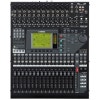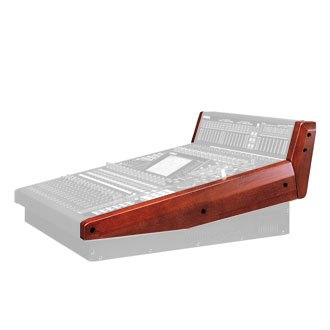
There is a single stereo master fader, and the desk also includes four high-quality effects engines (two when running at double clock rates) that provide all the usual reverb and time delay‑based effects (pitch-shift, phase, flange, chorus, and so on), plus four out of the five VCM effects suites. It is equipped with 16 full-length, 100mm motorised faders, and uses fader-layer paging to access channels 1‑16, 17‑32, masters (the eight auxes and eight mix busses), or a remote layer (for operating a DAW's parameters, for example). OverviewĮssentially, the 01V96 is a compact, rackmountable, 40‑channel digital console capable of operating at resolutions up to 24-bit and 96kHz. So, given the very close similarity to the previous versions of the 01V96, rather than repeating the detailed feature descriptions once again, I'll just provide a brief overview here to refresh the memory and refer you to Paul White's original August 2003 review for more information. The only visible change to the 01V96i console, compared with its predecessors, is the simple addition of the 'i' suffix to the product name, along with very slightly revised panel and knob colours. The software version running on the test machine.
#01V96I STUDIO MANAGER DRIVERS#
In addition, there are no issues with interface chip‑sets (unlike Firewire), and robust, well-proven drivers are readily available. The USB 2 interface hardware was already available in the 01V96 desk design, anyway, USB 2 has more than enough data capacity and speed to support 16 bi‑directional channels of audio at 96kHz, and the interface is fully backwards compatible with future USB 3 ports. The choice of USB 2 might seem odd to some, given the growing appearance of USB 3 and Thunderbolt interfaces, but actually it makes perfect sense. The new 'i' model's USB 2 interface supports 16 audio channels in and out, essentially interfacing within the console's signal paths in exactly the same way as a standard MY‑card interface does.
#01V96I STUDIO MANAGER UPDATE#
A basic USB interface has always been included with the desk, but up until the 'i' version, it has only been used for remote control and firmware update purposes. However, the design of the 01V96i has remained fundamentally unchanged from the 01V96 VCM, and the only significant alteration is the addition of USB 2 audio connectivity to allow direct interfacing with a computer DAW.

#01V96I STUDIO MANAGER UPGRADE#
The 01V96 (along with the other three models) had a modest mid‑life upgrade with V2 firmware a few years ago, followed by the inclusion as standard of the previously optional modelled VCM effects (adding the VCM suffix to the consoles). The two smaller models have slightly simpler mic preamps compared with the two larger models, although the differences in sound quality are relatively subtle. All four models share the same bespoke underlying DSP technology and differ principally in the amount of I/O and the physical control‑surface features. It was - and still is - the baby model in a range of very well specified and designed digital mixers that include the DM1000, the 02R96 and the DM2000 (in order of increasing size and I/O capability).

The Yamaha 01V96 digital mixer has been around for quite a while now, and Paul White reviewed it back in SOS August 2003. Is this enough to ensure it keeps pace with more recent competition?

Yamaha have added USB interfacing to their established digital mixer.


 0 kommentar(er)
0 kommentar(er)
